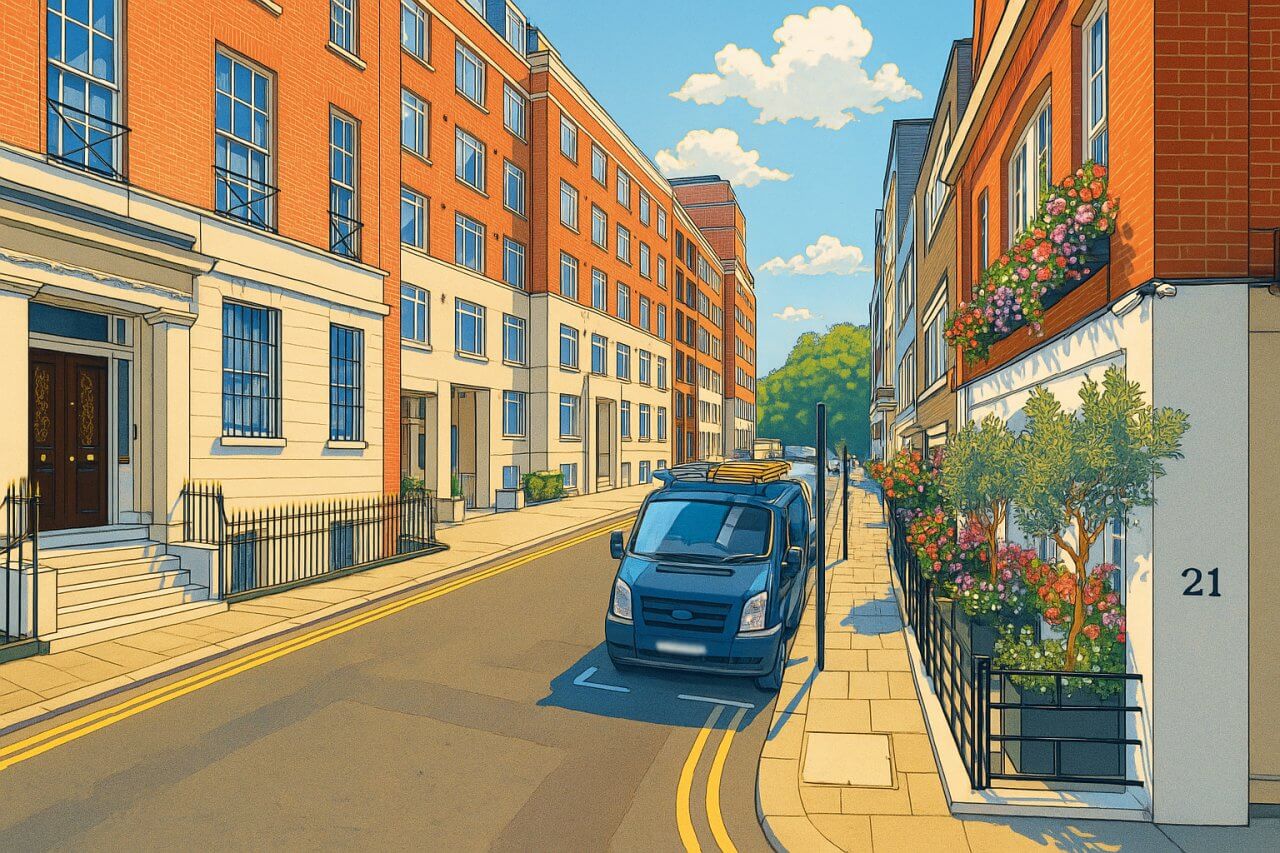
South Street, London
South Street is a refined and tranquil residential street nestled in the heart of Mayfair, a district within the City of Westminster, London. Running east to west, it connects the grand thoroughfare of Park Lane with the quieter and more intimate Farm Street. This elegant enclave is known for its historic architecture, secluded atmosphere, and reputation as one of London’s most prestigious addresses.
Location and Character
South Street lies in the western reaches of Westminster, between the hustle of Park Lane and the genteel charm of Farm Street. The street sits just north of Curzon Street and parallel to Upper Grosvenor Street, placing it within easy walking distance of Hyde Park and central Mayfair’s high-end shops, clubs, and restaurants.
The ambience is one of understated luxury. Flanked by Georgian and early 20th-century mansion blocks, interspersed with elegant townhouses, South Street exudes a quiet, exclusive character. Traffic is minimal, and much of the street is residential, with gated mews and private front doors giving a village-like feel in the centre of a global city.
Streets connecting to South Street
- Balfour Mews
- Chesterfield Hill
- Farm Street
- Park Lane
- Park Street
- Rex Place
- South Audley Street
- Waverton Street
History and Development
South Street was laid out in the 18th century as part of the grand Mayfair estate development, designed to house the upper classes within proximity to Hyde Park and the political heart of the country. The street’s architecture reflects a range of styles, from classic Georgian to Edwardian brickwork, with many properties retaining period features and ornate detailing.
The name “South Street” likely reflects its position on the southern portion of the original Mayfair grid layout. While there is no dramatic historical tale behind the name, it follows a typical London pattern of pragmatic, directional street-naming common in 18th-century developments.
Notable Buildings and Nearby Attractions
One of South Street’s most famous former residents was Winston Churchill, who lived at 28 South Street as a young man. His time there in the late 19th century is commemorated with a plaque, offering a small historical touchpoint for visitors.
Nearby attractions include:
- Grosvenor Square – a leafy square with diplomatic buildings, just a short walk north.
- Hyde Park – one of London’s largest royal parks, accessible via Park Lane.
- Farm Street Church – the elegant Jesuit church at the eastern end of the street.
- Shepherd Market – a historic and lively pocket of Mayfair filled with boutiques and eateries.
Property and Real Estate
South Street’s real estate is among the most desirable in London. As of 2025, townhouses here can fetch prices starting from £10 million for a 4,000 sq ft (approx. 372 sq m) home, with penthouses and larger freeholds reaching upwards of £25 million1. Flats in converted mansions or purpose-built blocks range from £3 million for a 1,500 sq ft (139 sq m) apartment to significantly higher depending on amenities, outlook, and historical significance.
In terms of price per square foot, South Street properties routinely exceed £3,000 per sq ft, placing them among the priciest in the City of Westminster and indeed all of London.
Transport Links
London Underground
The nearest London Underground stations are:
- Green Park Station – serving the Jubilee Line, Piccadilly Line, and Victoria Line (10-minute walk)
- Bond Street Station – on the Central Line and Jubilee Line (also connects to the Elizabeth Line)
- Oxford Circus Station – connecting the Bakerloo Line, Central Line, and Victoria Line
These stations offer fast links across central and greater London and provide easy access to the wider London Underground Stations network.
Bus Routes
Nearby bus stops are located along Park Lane and Curzon Street. Routes including the 2, 16, 36, 73, 148, and 390 serve these stops, connecting South Street with areas such as Marble Arch, Victoria, Notting Hill, and King's Cross.
Fun Fact
Winston Churchill, one of the most famous British Prime Ministers, lived at 28 South Street in the 1890s. The young Churchill would often pace the area while dictating notes and speeches, and it was here that he began his prolific writing career. Today, the house remains a privately-owned residence with its original façade intact.
Quick Facts
- Location: Mayfair, City of Westminster, London
- Connects: Park Lane (west) to Farm Street (east)
- Nearest Tube Stations: Green Park, Bond Street, Oxford Circus
- Nearby Bus Routes: 2, 16, 36, 73, 148, 390
- Known For: Exclusive residences, quiet elegance, Churchill’s former home
- Real Estate Prices (2025): From £3 million for flats, over £25 million for townhouses
- Property Sizes: Ranging from 1,500 sq ft (139 sq m) to 5,000+ sq ft (465+ sq m)
- Nearby Sights: Hyde Park, Grosvenor Square, Farm Street Church
- Fun Fact: Winston Churchill lived at 28 South Street in the late 19th century
References
Map of South Street, London
 Painting of South Street, London
Painting of South Street, London